



Cracow is the most popular tourist destinations in Poland with multitude of monuments, the biggest market square in Europe and full of UNESCO World Heritage attractions. On the other hand, Wrocław, the biggest city and the capital of Lower Silesia, has the charm of its own, with more than 1000 bridges and picturesque islands in the Old Town and the biggest population of dwarves, it is a magnet for many tourists. Finally, Warsaw, the capital of Poland, also enlisted at UNESCO list invites tourists with its Old Town, modern museums and vibrant energy. Check all these most famous locations to discover the true spirit of Poland!
7 nights/8 days
BB (Breakfasts)
April-September
3 cities
25-50
Moderate
Up to 30 days*

Arrival to Warsaw Chopin Airport. Transfer to Cracow. Check in at your hotel. 3 h of the Old Town sightseeing with entrance to St. Mary's Church. Free time in the city centre. Return to your hotel in Cracow. Overnight in Cracow.
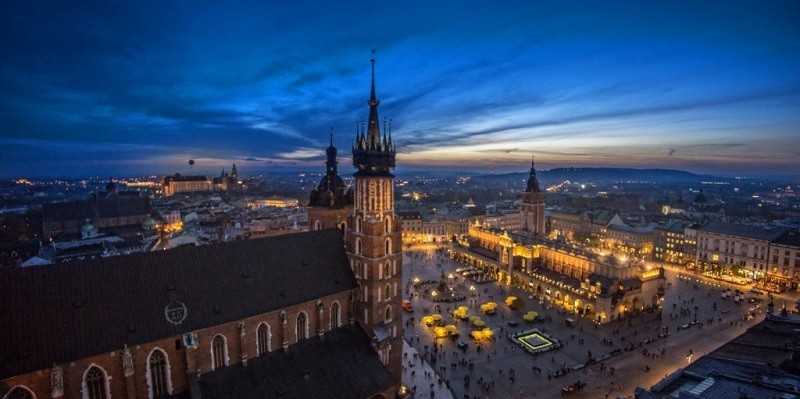
Kraków is one of the oldest Polish cities. The cityattracts a lot of tourists from around the world. We will start sightseeing from the OldTown. Kraków Main Square is Europe’s largest medieval market square. You will seemost of the attractions simply by walking. Spectacular Cloth Hall surrounded byhistoric tenement houses, the most famous Krakow artistic cellar - Piwnica podBaranami, as also as St. Mary's church. We will continue our trip alongFlorianska Street. You will see a lot of small shops in colorful, historic...

St. Mary's Basilica is one of the most famous monuments in Krakow and Poland. It is one of the largest and most important, after the Wawel Cathedral, church in Krakow. It is located at the north-eastern corner of the Main Square, on St. Mary's Square. Dating from the end of the 14th century, the basilica is preserved in the Gothic style. In the 15th century, chapels were added to the aisles. The greatest gem of this monument in Krakow is the altar of Veit Stoss from the end of the 15th century. It is the largest Goth...
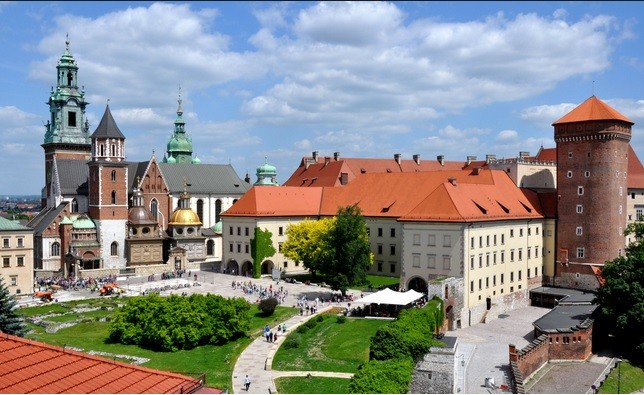
Breakfast. Sightseeing of Wawel Castle Royal Chambers, Wawel Cathedral and Wawel Hill. Short lunch break. In the afternoon sightseeing of Kazimierz District. Entrance to Remuh Synagogue and Cemetery and the Old Synagogue. Dinner with Klezmer Music Concert in Klezmer Hois restaurant. Overnight in Cracow.

Wawel Royal Castle is one of the top highlights in Kraków. Inscribed on the UNESCO World Heritage List it is one of the most visited places in Krakow. For centuries, it was the seat of Polish kings and a symbol of statehood. In 1930 the Castle also became one of the most important museums in Poland. The museum collects works of art historically or artistically related to Wawel, with Polish rulers, and great magnate collections.It collects paintings, prints, sculptures, fabrics, goldsmiths, militaria, porcelain and f...

The Wawel Cathedral is undoubtedly one of the most important monuments in the country. The full name of the church is the Cathedral Basilica of St. Stanislaus and St. Wenceslas in Krakow. It is here that the most important events in the history of Poland took place. Coronations, royal weddings and funerals. Inside, the central place is occupied by the 17th-century confession, i.e. the canopy altar of St. Stanisław, the bishop and patron of Poland, who died in the 11th century as a result of a conflict with King Boles...

The Jewish people have always played an important role in the history of Krakow and Kazimierz and its Jewish population have always played an important role the history of Krakow and have had a great impact on regional economy as well as culture. Kazimierz, that is known as a district of Krakow, used to be a stand-alone city. It was granted city rights in early 14th century, not too long after Jews in the Kingdom of Poland received numerous rights, such as freedom of religion, trade and travel. Since the very beginni...

Remuh Synagogue is the only active synagogue in Krakow. It is situated in the old Jewish Kraków district – Kazimierz, at 40 Szeroka Street. It is the only synagogue in the city which has regular religious services and the second oldest synagogue in Kraków. The construction of the synagogue started in 1558 in the place of a former wooden building which had burned. IThe building was rebuilt many times. Unfortunately, during World War II the synagogue was deeply devastated and its interior design was stolen. After the ...

The Old Synagogue is currently a branch of Kraków City’s Museum and is situated in the very heart of Kraków’s Kazimierz at 24 Szeroka Street. It is one of the oldest buildings of this type in Poland and in Europe. It was built in the second half of the 15th century. Unfortunately, during its history it has burnt a few times. Still, the most tragic period was of course the World War II when the Nazis devastated the building completely. It wasn’t rebuilt till 1956. Then it regained its Gothic-Renaissance look. Nowadays...

A themed dining is always a good choice when visiting another city. It is an amazing opportunity to experience first-hand some of the tradition and culture. And there is no better way than to have an authentic and tasty meal while enjoying a local band. An evening with live Klezmer music and Jewish cuisine will almost directly transfer you to the beginning of 20th century giving you insight into the Jewish culture of the old days. Please note that ITS-Poland works with groups only (10 participants and more).

Klezmer Hois is an absolutely unusual and climatic place. It is in the very heart of old Jewish district in Kraków – Kazimierz. It is situated in the 16th century building which up to the Second World War was one of the oldest mikveh in Kraków. It is a unique place which in its interior design and cuisine draws from pre war traditions of Jewish Kazimierz district. It is an excellent place to taste Jewish cuisine. The restaurant has three rooms, which can host an event for 130 people. Everyday at 20:00 there are klezm...

Breakfast. Transfer to Auschwitz-Birkenau Nazi German Concentration Camp Museum. 3.5-4 h standard sightseeing with a museum guide. Transfer to Wieliczka Salt Mine. Sightseeing with a museum guide. Return to Cracow Free time in the evening. Overnight in Cracow.

The Auschwitz concentration camp (Konzentrationslager Auschwitz) was a complex of over 40 camps and sub-camps, built and controlled by Nazi Germany in occupied Poland during World War II. It was established by Nazi Germany in mid-1940 in the suburbs of Oświęcim, which was then on the territory incorporated into the Third Reich. At the peak of the operation of the extermination camp in Auschwitz (1944), it was divided into Auschwitz I (established in 1940, in the buildings of pre-war barracks), Auschwitz II-Birkenau (...

The salt mine in Wieliczka is undoubtedly one of the greatest tourist attractions in Poland. Every year it is visited by almost two million tourists from all over the world. In 1978 it was entered on the UNESCO World Cultural and Natural Heritage List. The Wieliczka salt mine has 9 levels and reaches a depth of 327 meters. The mine can be visited in various ways, you can choose from the classic Tourist Route, the Mining Route, which will allow you to get to know the specificity of work "downstairs" and the pilgrim ro...

Breakfast. Transfer from Cracow to Wrocław with a short break at Moszna Palace. Sightseeing and a stroll in the park. Check in at your Wrocław's Hotel. 3 h sightseeing of the Old Town with entrance to Wrocław's Cathedral. Overnight in Wrocław.

Moszna Palace is located 125 km (1.5 h driving) from Wrocław. Since 1886 the palace was a residence of industrial tycoons, and after the second world war it was a medical centre for neurosis patients. From 2013 it is a hotel-conference center and a museum. The monument is surrounded by 200 hectare park with precious old trees (oaks and lindens which are a few hundred years old) and unique rhododendron clusters. The palace has, which is already legendary, 365 rooms and 99 turrets and towers. The surface area of the pa...

Wrocław is the most interesting and most beautiful city in Lower Silesia. You will start the tour from the Wroclaw Main Market Square. It is one of the largest markets in Europe. It has an area of 3.8 hectares. There are many colorful tenements from different eras, many restaurants, souvenir shops, bookstores .. It is a place that attracts tourists as well as Wrocław residents. The 13th century Main Market Square features the Old Town Hall. Inside is the Museum of Bourgeois Art - a branch of the City Museum and the...
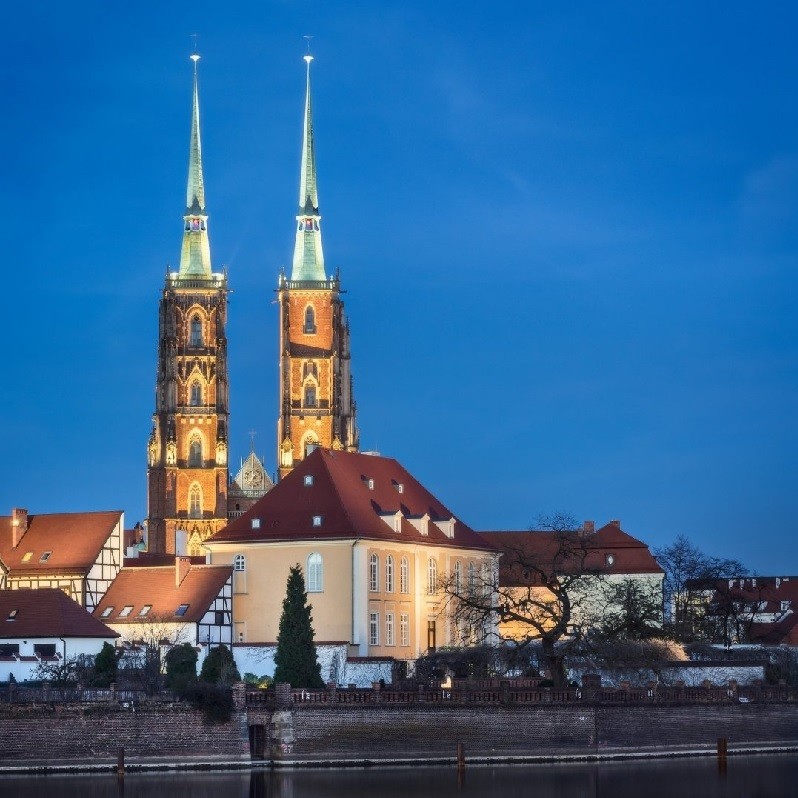
The Cathedral of St. John the Baptist in Wrocław (Polish: Katedra Św Jana Chrzciciela Wrocław), located in the Ostrów Tumski district, is a Gothic church with Neo-Gothic additions. It is the most important temple in Wrocław, the church of the Wrocław Archbishop. A beautiful gothic building, built in the 13th / 14th century as the fifth church in this place (the first Wrocław cathedral was founded by Bolesław Chrobry in 1000), rebuilt after the destruction in 1945. Inside the cathedral there are valuable monuments of ...

Ostrów Tumski is the oldest, historic part of Wrocław. It was created in the area of crossings on the Odra River, between the estuaries of the rivers - Oława in the south, Ślęza and Widawa in the north. One of the most beautiful monuments of Ostrów Tumski is the Gothic cathedral of St. John the Baptist and the Church of the Holy Cross. A popular meeting place and tourist attraction is the Tumski Bridge between Wyspa Piaskowa and Ostrów, also known as the Lovers' Bridge. The lovers hang padlocks on it as a sign of the...

Breakfast. Transfer to UNESCO Peace Church in Świdnica and sightseeing. Next, transfer to Książ Castle, sightseeing of the palace and gardens. Finally, transfer to Osówka Riese Complex and sightseeing. Return to Wrocław. Overnight in Wroclaw.

The church in Świdnica is situated about 53 km from Wrocław (about 1 h 10 min drive). It is made from wood and incredibly was erected only within a year of 1957. It is the biggest wooden Protestant church and with the area of 1090 square meters, it can gather 7 500 believers. The interior of the church has a Baroque style. The most dominant interior items include the 18th century altar piece, pulpit and organs. The church is encircled by lodges, among which Hochberg lodge is the most distinctive. The church is situat...

Książ Castle is especially interesting as it joins older history, as the construction started in the 13th century, and more recent history as it was largely changed during WWII. If you enjoy conspiracy theories of the human civilization, there is no other such place like Książ as digressions about Hitler purposes for Książ are numerous. During sightseeing of the castle, you will be able to see lots of alternations introduced by Nazi Germans. Apart from the Castle itself it is worth to stroll in the Książ gardens desi...

The underground city Osówka is one of the most interesting underground complexes built by the Third Reich in the Owl Mountains as part of the RIESE (Olbrzym) project, which is now open to the public. The Osówka underground complex is located just over a kilometer north-east of Kolce and the same distance north of Sierpnica. The underground tourist route is a system of concrete corridors, fortifications and halls, which were built on a large scale in 1943, using workers and prisoners from the Gross-Rosen camp. The mos...

Breakfast. Sightseeing of Centennial Hall (outside), Japanese Gardens and Leopoldina Lecture Hall in Wrocław. Free time in the city centre. Transfer to Warsaw. Check in at your hotel. Overnight in Warsaw.

The historic Centennial Exhibition Complex includes Wrocław’s only UNESCO site, the country’s oldest zoo, the tranquil Japanese Garden, the tourist-luring Pergola Fountain and the newly renovated Four Dome Pavilion. It was constructed according to the plans of architect Max Berg in 1911–1913, when the city was part of the German Empire. Max Berg designed Centennial Hall to serve as a multi functional structure to host exhibitions, concerts, theatrical and opera performances, and sporting events, it has a seats for 7 ...

The Japanese Garden was founded in 1913. The initiator of its construction was Count Fritz von Hochberg, who engaged the Japanese gardener Mankichi Arai. Currently, it is one of the most popular places for walking and relaxation in Wroclaw. This garden is a combination of several types of Japanese gardens: public, water, associated with a tea ceremony and a rocky beach. Almost 270 taxa of woody plants have been gathered in the garden. By 2009, 78 species of Asian plants had been collected in the garden, including 38 ...

Leopoldina Lecture Hall is a part of Wrocław University and it is the biggest and the most representational part of the main campus. It is often called a Baroque pearl as it is a very spectacular, secular monument of architecture created at the end of this period. The lecture hall as the whole building was erected in years 1728-1732 and was named after founder of the whole university Holy Roman Emperor Leopold I. The lecture hall itself as the most representative part of the building has stucco decorations, frescos...

Breakfast. 4 h of the Old Town sightseeing with a guide. Free time in the Old Town. Next, transfer to Royal Baths Palace and Park, sightseeing with a guide. Finally, transfer to the viewing deck of Palace of Culture and Science. Return to your hotel. Overnight in Warsaw.

Warsaw is the capital of Poland and the largest city in the country in which about 2 million people live. Warsaw's Old Town is a real pearl of the capital. Enlisted at the UNESCO World Heritage List, delights with colourful tenements and the unique atmosphere of narrow streets. On the Old Town Square you will meet the Mermaid - the official symbol of the city. You'll see the Barbican and the bell on Kanona Street. You can also visit the Royal Castle, the former home of Polish rulers. Here it is possible to see the ro...
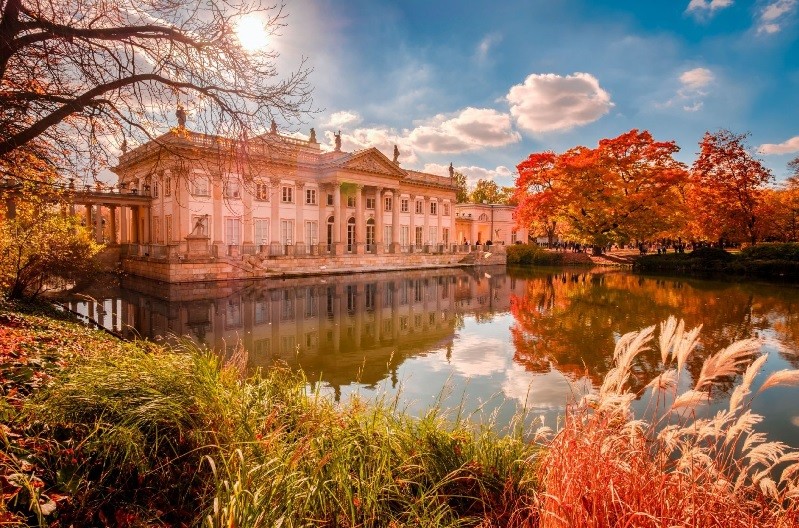
Royal Baths or Łazienki Królewskie is the largest park in the centre of Warsaw. Łazienki are situated halfway down the Royal Route, between Royal Castle and Wilanów. On the area of 76 hectares one may find over 40 points of interest and numerous historic buildings, designed by the king Stanisław August Poniatowski’s in-court architects. Palace on the Isle, Roman Theatre, Myśliwiecki Palace or Chopin Monument are just a small selection. Łazienki Królewskie host various cultural and entertainment events, displays and e...

Palace of Culture and Science (Polish: Pałac Kultury i Nauki) in Warsaw is just a 30-minute walk from the Royal Castle. The Palace was built in 3 years by 3,500 Russian workers as a gift from Joseph Stalin. Since it was finished in 1955 is has been the tallest building in Poland, its spire reaches 237 metres and the viewing terrace on the 30 floor (114m.) allows you to admire Warsaw from above. The Palace of Culture and Science has 3288 rooms, including Congress Hall which seats 3,000 people and a swimming pool. In y...

The viewing terrace is located on the 30th floor of the Palace of Culture and Science, at a height of 114 m, where guests are brought by two modern lifts. From here, visitors can admire the entire panorama of Warsaw, even at night. To enter the viewing terrace, visitors must enter the building from the Parade Square (between Studio and Dramatic theaters), then go straight through the hall to the cash desks and from there to the corridor leading to the elevators - only the last two go up. After seeing the city from ab...

Breakfast. Transfer to Wilanów Palace. Sightseeing the Palace and Gardens. Transfer to the airport. Departure.

The Wilanów Palace, together with its garden, is one of the most beautiful objects of its type in Poland. Baroque palace and the meticulously designed surrounding gardens, situated at the end of the Royal Road and built for the king John III Sobieski, are filled with Polish as well as European culture. Wilanów hosts many exhibitions and concerts, including the International Summer Early Music Academy. The Wilanów Palace also houses one Poland’s first ever museums, established in 1805.
Driver, local and museum guides, tourguide on request
St. Mary's Church in Cracow, Wawel Castle Royal Chambers, Remuh Synagogue and Cemetery, Old Synagogue, Klazmer Music Concert, Klezmer dinner, Wieliczka Salt Mine, Auschwitz-Birkenau Museum, Cathedral of St. John the Baptist in Wroclaw, Świdnica Peace Church, Książ Castle and Gardens, Osówka Complex, Japanese Gardens, Leopoldina Lecture Hall, Royal Baths Palace and Park, Viewing Deck of Palace of Culture and Science, Wilanów Palace and Gardens.
coach
Airport and hotels for sightseeing
Airport and hotels for sightseeing
English (other on request)
Round tour

Discover Poland and its main attractions in the biggest cities of Warsaw, Kraków and Wrocław. Warsaw is the capital of Poland and the well known political, administrative and economical heart of the country. Kraków, the former capital is often cal...

Poland a country in the Central Europe, 77th largest in the world with population of 38.5 mln. Most people live in large cities including the capital Warsaw, former capital Kraków, Tri-city agglomeration of Gdańsk, Sopot and Gdynia), Poznań, Wrocł...

Poland is located in the very centre of Europe. It’s the seventh biggest country on the continent. In this tour discover 8 great Polish cities, lots of historical monuments, natural wonders, magical castles, charming villages and much more. Crea...
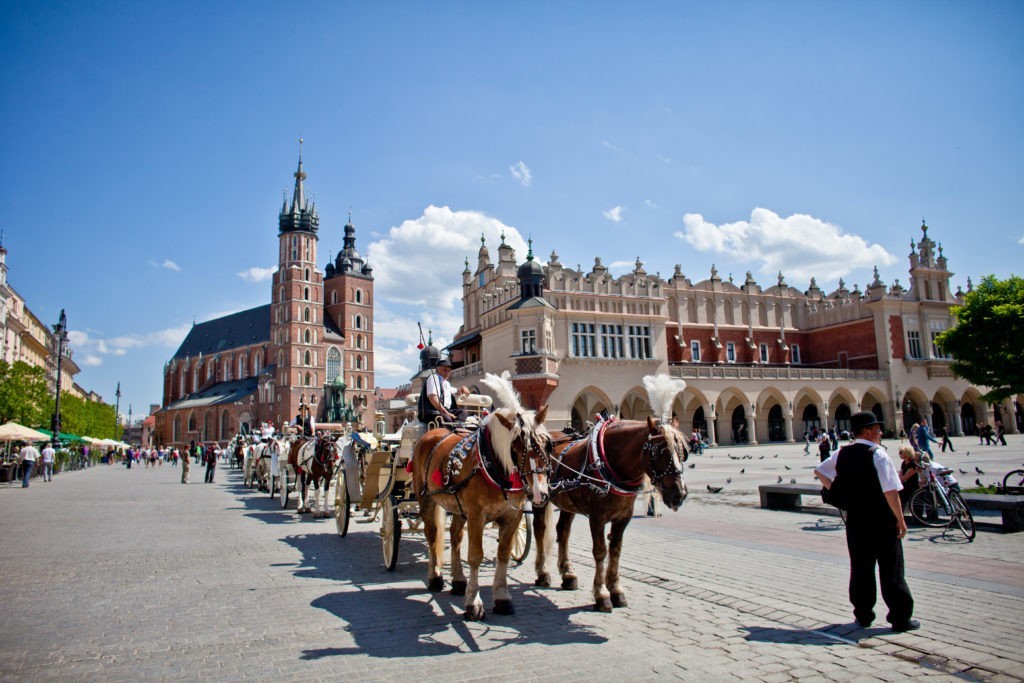
Warsaw has many marvels to discover. As most of contemporary European capital cities, it enchants visitors with vibrant variety of attractions and quick pace and energy. The city that survived the calamity of WWII, still surprises with its amazing...